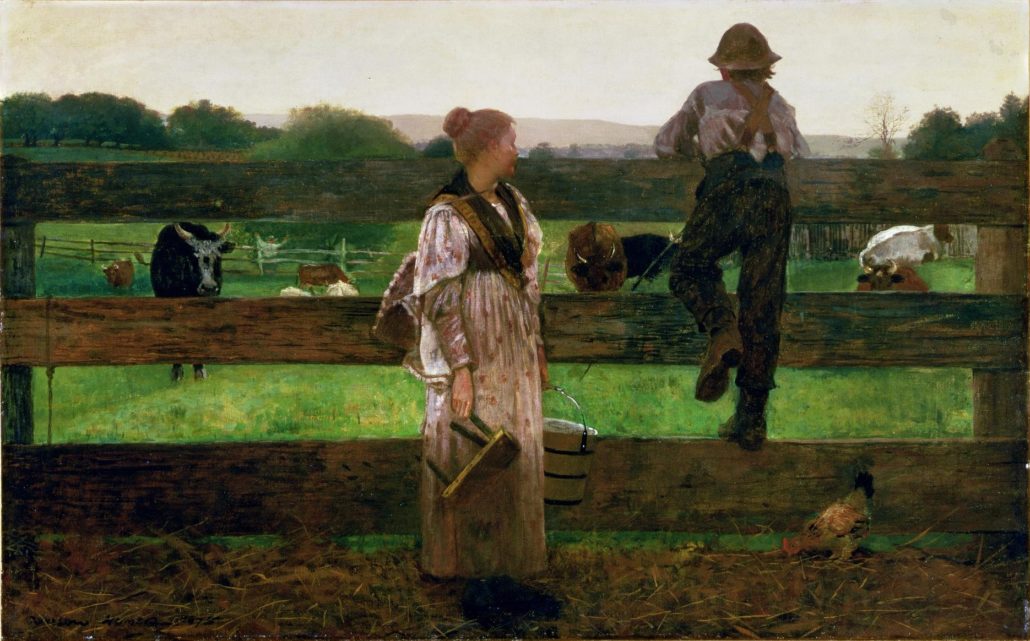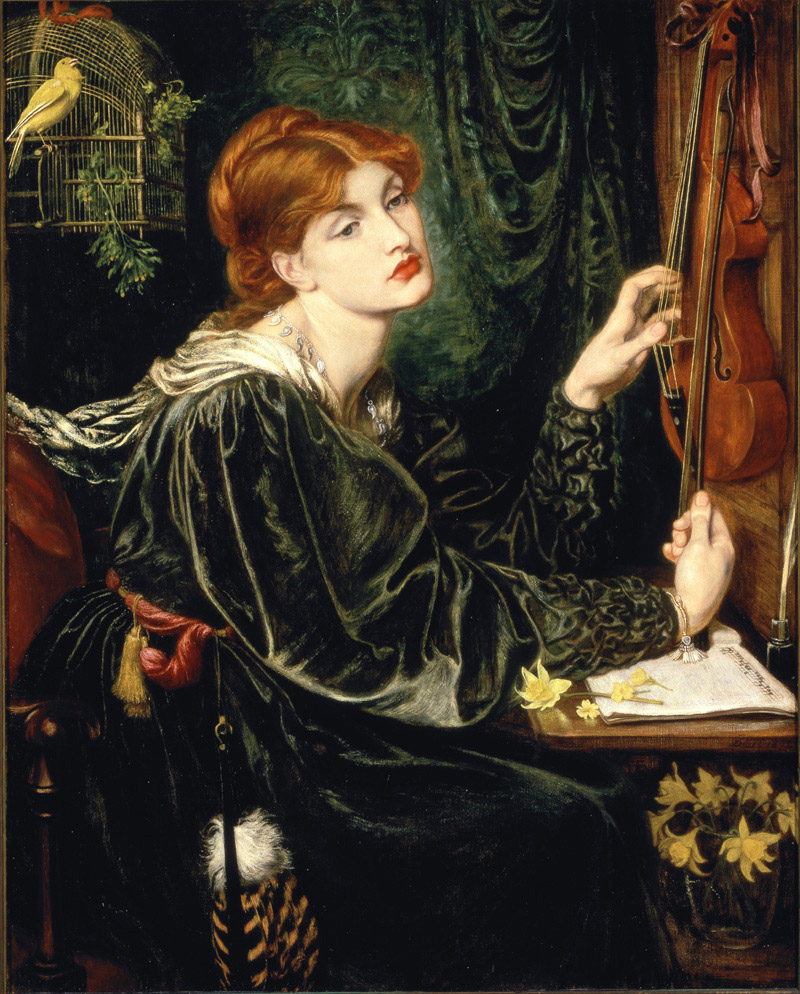The Future of the Museum: In the war between Directors and Boards, it’s the Art that Pays.
Ruth Osborne

Delaware Art Museum, Wilmington, DE.
To the long list of stripped gallery walls will now unfortunately be added those of the Delaware Art Museum. Though the state it represents is small, its collection boasts one of the largest selections of Pre-Raphaelite art (outside of the U.K.), important pieces from Brandywine River School artists Howard Pyle and N.C. Wyeth, and a large number of paintings of the New York Ashcan School.
In short, this collection offers visitors a window onto influential American and English artists and illustrators of the nineteenth and early twentieth century that is both varied and focused in its depth. Those donors who gave to the Museum after it opened in 1912 were committed to their own individual collecting practices as well as to promoting the well-being of arts education and appreciation in their state. However, as has been the case with many large and small cultural institutions in recent years, boards of trustees are less and less willing to sacrifice new construction to protect the original collection.
The Delaware Art Museum announced March 26 that it intends to repay its $19.8 million in bond debt by the sale of four (as yet unnamed) works from its permanent collection. This sale, projected at $30 million, is also aimed at “[replenishing] the Museum’s endowment, which will place the Museum on a firm financial basis for the future.” The Museum also states in its press release that: “No works of art acquired through gift or bequest will be part of the sale.” How is it, may we ask, that the Museum came to acquire $19.8 million in debt? Beyond stock market woes from the 2008 crash are lingering bond debts exacerbated from its 2005 building expansion.[1]
This was, according to new CEO Mike Miller, the only other option beyond completely shuttering the Museum’s doors.[2] The decision to sell four works from the collection has brought on scolding from the American Alliance of Museums (AAM) and the Association of Art Museum Directors (AAMD), though Miller seems to have acknowledged this was worth it. Miller, to be clear, has no background in the arts. He came in, as a replacement for the Museum’s former director Danielle Rice, with a background as CFO of a pharmaceutical company. President of AAMD Timothy Rub (Director of the Philadelphia Museum of Art) has conveyed a good deal of criticism towards the Delaware Board’s decision. They failed to take his advice to go public with their debt and approve the sale after their director had left for a better opportunity: “Who was the advocate at the museum now from the curatorial or directorial side to make the case for maintaining the integrity of the collection?” The professional staff at the Delaware Art Museum will now be the ones to bear the brunt of the consequences from this unsanctioned sale. It must also be noted that only one sale in the past 10 years has been sanctioned for the sake of financial crisis. Exhibition loans and other types of collaboration between Delaware’s collection and the several hundred museums that are members of AAMD can be halted all because of their Board’s decision. [3]
Rub has also conveyed disappointment that the Board failed to look into other options for recovering their finances: “The stewardship of a collection is one of our paramount responsibilities and when we begin to look at pieces of a collection as fungible resources that can be monetized we are starting down a very slippery slope.” [4] Both the AAM and AAMD have issued strong statements against the Delaware Art Museum’s Board for their actions. President Ford Bell (of AAM) has not revoked their accreditation, but the finger wagging they received still has a good deal of potency:
“The Delaware Art Museum’s announcement that it will sell four works from the collection in order to pay its debts and support its endowment is a flagrant violation of the AAM standard for U.S. museums, succinctly embodied in this enduring principle of our field: the museum is there to save the collection; the collection is not there to save the museum.” [5]

Winslow Homer, Milking Time (1875). Courtesy: Delaware Art Museum.
CEO Miller has remained silent to recent accusations that a painting by landscape artist Winslow Homer, Milking Time (1875), might be one of the four to be sold. This piece is known to be one of the masterpieces of the collection. When it was noticed that the painting had been removed from the Museum’s wall as well as its online collection database, Miller told the press “You can make your own speculations.”[6]
Lee Rosenbaum’s interview with the Museum’s former director Danielle Rice is quite eye-opening. Essentially, Rice reveals what a jaded museum professional would unfortunately learn to expect from a board of trustees feeling the financial pinch.[7]
ROSENBAUM: Did you know this was coming?
RICE: Of course I did! Every single trustee of every single museum board always thinks, “We can always sell art.” So from the minute I stepped into the place, I was saying to them, “No, you can’t do that.
RICE: What I think happened was that my leaving opened up the door for them to take this path, which was to say: “We won’t get a new director. We’ll do this in this interim period, and when a new director comes in, they won’t have the financial problem. They’ll have an image issue and a sanction issue to deal with, but at least we will have done the deed, in between professional directors. Any professional director worth his salt could not have embarked on this kind of thing…I think selling art is one of those magic bullets that all trustees fantasize about. They don’t understand the more abstract and difficult concept of public trust.
According to last month’s press release from the Museum: “This is a singular event.”[8] And yet, once an unsanctioned sale of artworks to cover a Museum’s debt occurs, it sets a terrifying precedent. The Delaware Board’s action can open the floodgates for boards of other museums facing similar financial crises that do not see any other options in sight. Beyond neglecting to protect the artworks that do go off to auction, one must consider how this will impact the care given to the pieces that remain (for now) in the collection. Will a board’s responsibility to safeguard artistic heritage all too easily succumb to financial pressures when funds from other donors dry up? Does money come first, and art second? Is a museum no longer a cultural institution, but now a business to develop and streamline for efficiency? What will now be expected of the Delaware Board since the lines have been crossed? Even the giant Metropolitan Museum of Art allowed itself to recently balance out its $4.4 million deficit from 2013 with the sale of 3,290 artworks this very month.[9]
As has been expressed in the Times‘ coverage of Delaware’s situation, the sale of collection items to make up for capital or operational expenses is seriously considered as an “ethical violation, a betrayal of a museum’s role of holding art in public trust.” [10] One member of the Museum’s collections committee, but not a trustee, recently spoke out with disdain: “A lot of us in the community, myself included, were blindsided by this.” This same committee member has also brought to light the fact that other Delaware cultural institutions (Delaware Theatre Company, Delaware Symphony Orchestra) had gone through similar post-recession crisis, but still came out on the other side without such great losses on the horizon.[11]

Dante Gabriel Rosetti, Veronica Veronese, 1872. Collection: Delaware Art Museum.
Donn Zaretsky, of the UK-based art law blog, brings Delaware’s situation into wider context by comparing it to lack of fuss given when the Pennsylvania Academy of Fine Art’s recent deaccession and sale of a masterpiece Hopper painting in order to purchase pieces of contemporary art in August 2013. [12] An unfortunate reaction from a major Delaware news source demonstrates the lack of conviction held by some members of the local public impacted by this sale:
“Let’s be realistic though. No one likes the idea. But the suggestion from the association and other critics that museum distribute its collection to other museums to keep the art out of private hands is foolish. The sale of the four pieces would keep the museum open here. More than 60,000 people visit the museum each year. They would be deprived of a Delaware treasure if that were to happen.” [13] Is there not a more respectful, diligent way for the Board to responsibly protect their “Delaware treasure”?
What is this disconnect happening between museums and the public where failure to see a collection’s broader cultural value leads to a disavowal of these great resources? When boards fluster under the weight of crippling debt, and the public seems to have not seen this coming, where do we start rebuild the bridges between the modern public and the artistic heritage of the past?
[1] “Press Statement: Delaware Art Museum Board of Trustees Vote to Retire Debt,” 26 March 2014. Delaware Art Museum. http://www.delart.org/wordpress/wp-content/uploads/2013/11/Press-Statement.pdf (last accessed 4 April 2014).
[2] Randy Kennedy, “Delaware Art Museum Will Sell Works to Pay Off Debt,” 26 March 2014. New York Times. http://artsbeat.blogs.nytimes.com/2014/03/26/delaware-art-museum-will-sell-works-to-pay-off-debt/ (last accessed 4 April 2014).
[3]”Museum to sell art to pay debt,” 27 March 2014. Delaware Online. The News Journal. http://www.delawareonline.com/story/entertainment/arts/2014/03/26/delaware-art-museum-sell-four-works/6913117/ (last accessed 4 April 2014).
[4]Kennedy.
[5] Lee Rosenbaum, “AAM Condemns Delaware Art Museum’s Deaccessions,” 27 March 2014. CultureGrrl. http://www.artsjournal.com/culturegrrl/2014/03/aam-condemns-delaware-art-museums-deaccessions.html (last accessed 17 April 2014).
[6] Margie Fishman, “Is Winsow Homer painting headed for sale?,” Delaware Online. The News Journal. http://www.delawareonline.com/story/news/local/2014/04/12/sunday-preview-winslow-homer-painting-headed-sale/7637959/ (last accessed 16 April 2014).
[7] Lee Rosenbaum, “Delaware Art Museum’s Deaccession Debacle: My Q&A with Its Former Director, Danielle Rice,” 2 April 2014. CultureGrrl. Arts Journal. http://www.artsjournal.com/culturegrrl/2014/04/delaware-art-museums-deaccession-debacle-my-qa-with-its-former-director-danielle-rice.html?utm_source=feedburner&utm_medium=feed&utm_campaign=Feed%3A+artsjournal%2FXHaF+%28CultureGrrl%29 (last accessed 4 April 2014).
[8]”Q&A,” November 2013. Delaware Art Museum. http://www.delart.org/wordpress/wp-content/uploads/2013/11/PublicQandA_2.pdf (last accessed 4 April 2014).
[9] “Museums: Balance,” in AMA Newsletter. No. 146 (3 April 2014). Art Media Agency, 7.
[10] Kennedy.
[11] Fishman.
[12] Donn Zaretsky, “How to be ethical in the art world,” 27 March 2014. The Art Law Blog. http://theartlawblog.blogspot.co.uk/2014/03/how-to-be-ethical-in-art-world.html
[13] “Preserving art in a changing world,” 29 March 2014. Delaware Online. The News Journal.
http://www.delawareonline.com/story/opinion/editorials/2014/03/29/preserving-art-changing-world/7036289/ (last accessed 4 April 2014).

